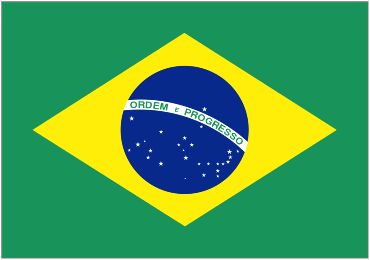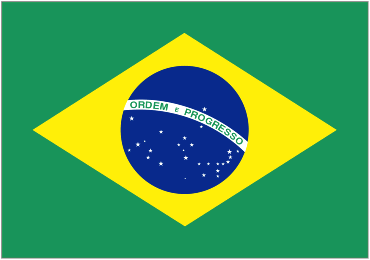October 12.

It began with a two-foot tall sculpture. Headless at that.
Three fishermen were casting their nets in the Paraiba River in Brazil. The year was 1717. Their nets were turning up empty until one of the fishermen pulled up a dark brown headless statue of a woman. Intrigued the fisherman cast his net again and pulled up the head. After finding the statue, the men’s net grew heavy with fish. They called the idol Nossa Senhora da Aparecida–Our Lady Who Appeared.
For the first 15 years, the small black Madonna was housed in one of the fishermen’s homes. Legends grew around the doll and the miracles it performed, including one legend about a slave who visited the shrine, whose chains broke when he came in contact with the idol. It became a symbol of hope for the oppressed in Portuguese-controlled Brazil. By the 1760s, due to its popularity a basilica was built to house the shrine, and the town itself became known as Aparecida.
The basilica was renovated in the 19th century. In the 1950s a new, larger basilica was begun to accommodate the overwhelming amount of visitors.
The Pope declared Our Lady of Aparecida the patron saint of Brazil in 1928, and today the National Shrine of Our Lady of Aparecida is widely considered the second largest church in the world after St. Peter’s. It can accommodate 45,000 people and receives almost 7 million visitors a year.
October 12th is the national saint’s feast day, but these days the holiday is also celebrated as Children’s Day. Children throughout Brazil look forward to this day all year, for it’s the day they unwrap gifts from their parents. In many places in Brazil, Children’s Day is even bigger than Christmas.


You forgot to mention the giant market that is held there too to cater for all the pilgrims. Many groups of people walk or travel hundreds of KMs to visit the shrine.
For a list of childrens day activities
http://www.paraibaparadise.com/articles.php?artcod=95&lang=1&n=3&subCod=5
this made no sence. why would u post this
SO WHATS THE REAl REASON OR THE WHOLE PoINT OF THE CHilDRENS dAY??
NOT bIENG RUdE jUS ASkiNG, HOW THE STATUE GETS bETWEEN All OF THiS ANd THE fiSHiES??
SO WHATS THE WHOlE REASON WHY YAll HAVE CHilDRENS DAY? hOW dOES iT lEAD WiTH THE FiSHES AND STATUE? HOW DO THEY LEAD TO CHilDRENS DAY?
I still don’t get the children’s holiday
ok…people i lived in brazil for my whole life now im 13 and i live in the U.S.A and children’s day is basiccly a day that we celebrate the life of our children’s and we give them presents :)
hmmmmmmmmm its nice it
is nice
Just to clearify: Children’s day was created by the United Nations as a day to celebrate infancy agains slavery and forced labour. It is a holiday in several countries around the world like Japan, Sweden, Brazil etc happening, however, in different days of the year. In most countries where they are celebrated, it is a national holiday.
fascinating